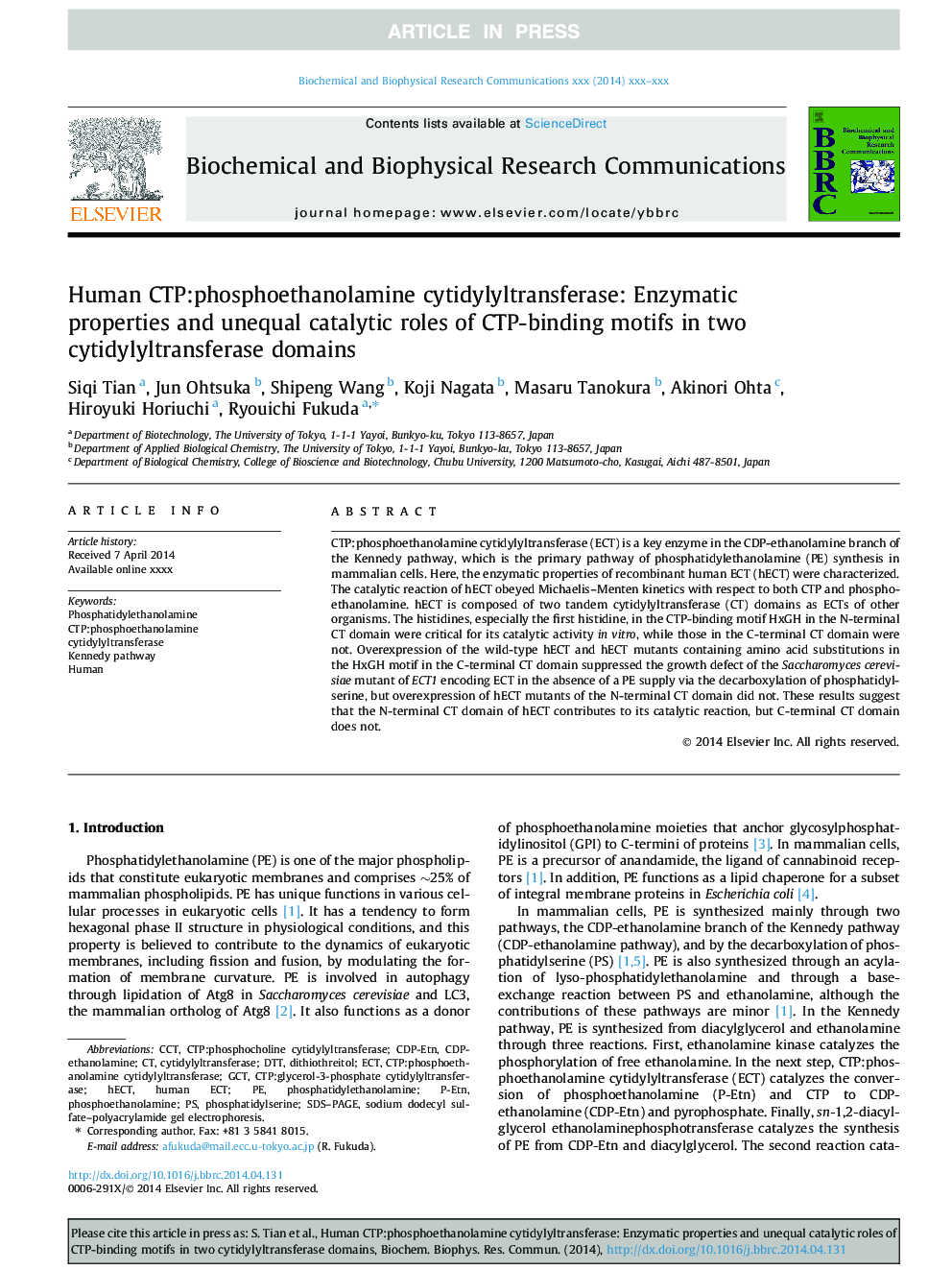| Article ID | Journal | Published Year | Pages | File Type |
|---|---|---|---|---|
| 10755049 | Biochemical and Biophysical Research Communications | 2014 | 6 Pages |
Abstract
CTP:phosphoethanolamine cytidylyltransferase (ECT) is a key enzyme in the CDP-ethanolamine branch of the Kennedy pathway, which is the primary pathway of phosphatidylethanolamine (PE) synthesis in mammalian cells. Here, the enzymatic properties of recombinant human ECT (hECT) were characterized. The catalytic reaction of hECT obeyed Michaelis-Menten kinetics with respect to both CTP and phosphoethanolamine. hECT is composed of two tandem cytidylyltransferase (CT) domains as ECTs of other organisms. The histidines, especially the first histidine, in the CTP-binding motif HxGH in the N-terminal CT domain were critical for its catalytic activity in vitro, while those in the C-terminal CT domain were not. Overexpression of the wild-type hECT and hECT mutants containing amino acid substitutions in the HxGH motif in the C-terminal CT domain suppressed the growth defect of the Saccharomyces cerevisiae mutant of ECT1 encoding ECT in the absence of a PE supply via the decarboxylation of phosphatidylserine, but overexpression of hECT mutants of the N-terminal CT domain did not. These results suggest that the N-terminal CT domain of hECT contributes to its catalytic reaction, but C-terminal CT domain does not.
Keywords
Related Topics
Life Sciences
Biochemistry, Genetics and Molecular Biology
Biochemistry
Authors
Siqi Tian, Jun Ohtsuka, Shipeng Wang, Koji Nagata, Masaru Tanokura, Akinori Ohta, Hiroyuki Horiuchi, Ryouichi Fukuda,
